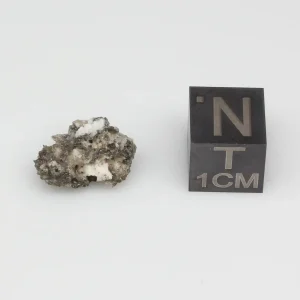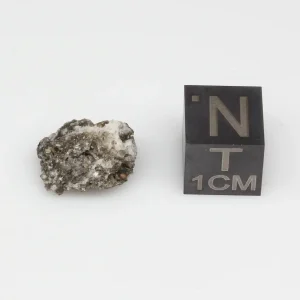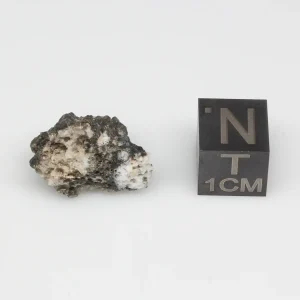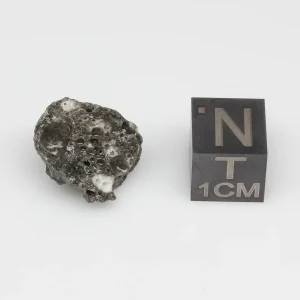Wabar Impactite
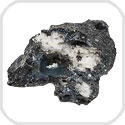 The Wabar Crater Cluster in the Rub Al-Khali region of the southern Arabian Peninsula formed from the impact of several masses of IIIAB medium octahedrite asteroid. The asteroid had a total weight of approximately 3500 tons. The cluster of at least three craters was originally discovered in 1933 by St. John Philby. The constantly changing sand dunes of the area cover and expose the craters to varying degrees over time. The three well-observed craters are the 11 Meter, Philby A, and Philby B. Their diameters are 11 meters, 64 meters, and 116 meters respectively. Modern dating methods have reduced the age of the cratering event to approximately 300 years. This date corresponds very well with a tremendous fireball event witnessed and recorded on September 1, 1704.
The Wabar Crater Cluster in the Rub Al-Khali region of the southern Arabian Peninsula formed from the impact of several masses of IIIAB medium octahedrite asteroid. The asteroid had a total weight of approximately 3500 tons. The cluster of at least three craters was originally discovered in 1933 by St. John Philby. The constantly changing sand dunes of the area cover and expose the craters to varying degrees over time. The three well-observed craters are the 11 Meter, Philby A, and Philby B. Their diameters are 11 meters, 64 meters, and 116 meters respectively. Modern dating methods have reduced the age of the cratering event to approximately 300 years. This date corresponds very well with a tremendous fireball event witnessed and recorded on September 1, 1704.
The craters were formed entirely of loose sand without the impacting masses penetrating the limestone bedrock deep below the sand sheet. The walls of the craters are composed of “instant rock” a term created to describe the flash lithification of the quartz sand into rock by the shock of the impact. Some of the instant rock is easily crush-able between fingers while other pieces are hard. The original bedding of the sand is often preserved and seen in the fragments. Cross bedding and even animal burrowing have been preserved in the impact formed rock. The crater walls consist of the instant rock as a breccia. The walls are partially covered with melt glass that ranges in color from black through grays to white. Black droplets of glass are found in one area of the strewnfield which extends away from the craters. The black droplets appear to have formed from a high-temperature cloud which blew the droplets to the north a few hundred meters.
The impactite glass material from Wabar is bubbly and almost universally a mix of glass, instant rock fragments, and particles of iron meteorite. Some pieces of the impactite glass show red discoloration from the oxidation of the meteorite iron contained within them. The better vitrified black glass droplets have long been treasured items called Wabar Pearls. They have a strong similarity in appearance to well-vitrified glass droplets from other craters. However, the ones from Wabar will usually have fragments of the instant rock inside them which shows on broken surfaces.
Wabar crater samples are quite rare compared to similar material from other impact crater locations. The crater site is remote and permission for access is no longer easy to obtain. Wabar crater material has never been abundant. We have a nice sampling of the varieties of impactite and rock from the Wabar craters for sale.

